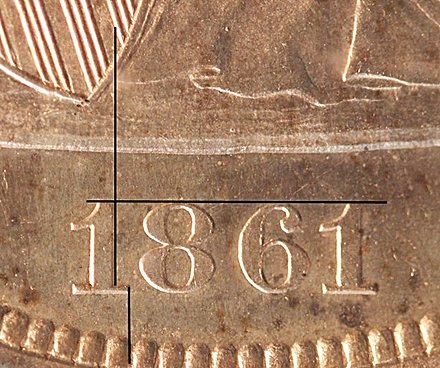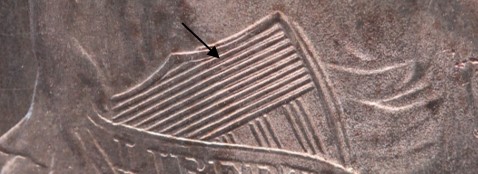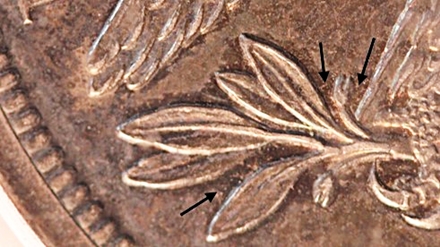|
|
Comments: This is the first of two uses of Obverse P1 and the only use of Reverse PA. |
Obverse P1 The following photo shows the Obverse P1 attribution grid.  1861 Obverse P1 attribution grid The most notable Obverse P1 marker is doubling on the right side of the horizontal shield lines show in the photo below. It looks like die doubling, but it involves only the right side, so we’re not sure of the cause. Whatever the cause the doubling serves as a very notable marker to identify the die.  1861 Obverse P1 doubling on shield lines
|
Reverse PA doesn’t show much in the way of die markers, but one feature allows it to be differentiated from the other proof reverse. The areas around the leaves and buds are slightly unfinished. This can be contrasted to Reverse PB which is completely finished in these areas. These features are best noted on bright coins. They may be a bit difficult to see under natural toning. The collector can also note the LACK of the lump on the stem that’s notable on Reverse PB.  1861 Reverse PA slightly unfinished around the leaves
Examples of OC-P1 are usually sharply struck on the upper edge of the eagle’s left wing, whereas OC-P2 usually shows slight weakness. This difference isn’t definitive, since we’ve seen exceptions both ways. |
| Photo credits:
Obverse P1 and Reverse PA: 1861 PCGS PR64 Cameo, from the Osburn-Cushing reference collection. |
